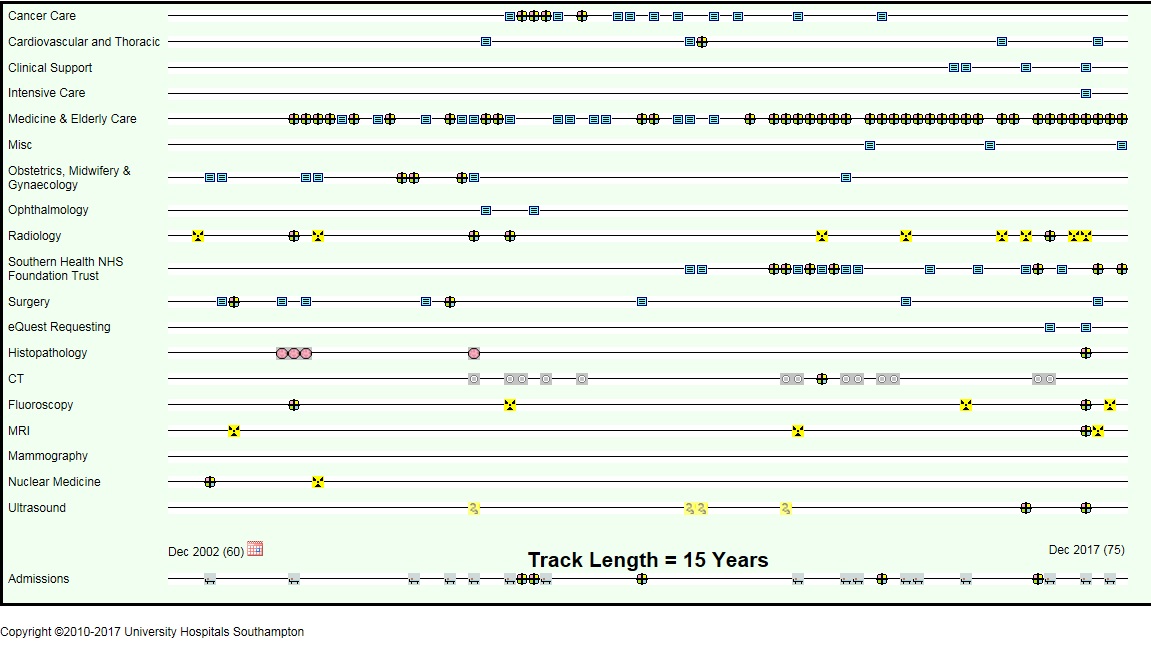Whole of life visualisation of master data for engineering entities
I am grateful to Peter Eales for his invitation to contribute this Blog, for the interest of the wider Master Data community.
Over the past ten years, I have led a small development team at University Hospital Southampton NHS Foundation Trust in the creation and implementation of a radical approach to the Electronic Patient Record interface. Our product, UHS Lifelines [1], is a prime exemplar of the Stacked, Synchronised Timeline and Iconographic (SSTI) structure. It is live and in daily use across the hospital for some 2.5M individual patient record sets.
This system has evolved from the Lifelines project work of the Human Computer Interaction Laboratory of the University of Maryland in the mid 1990s [2], but which was not further developed into practical applications at that time.
The UHS Lifelines system permits the display, navigation and interrogation of all electronic records (documents, reports and events) for any one patient on a single computer screen, where the X axis displays continuously incremental time, and the Y axis displays the subject taxonomy for which e-data is available for the individual patient. Each icon acts as a dynamic window to the underlying document or cluster of documents, reports and events.
The UHS Lifelines sits efficiently over the data sets, which may be sourced from a number of different packages and software systems, so as to load the interface in real time.

The image is a live screenshot in an outpatient clinic of an older lady who has multiple co-morbidities and who has needed multiple hospital admissions. Each icon opens a frame to display the underlying content
The purpose of dynamic data visualisation
Data exists to help human beings to make decisions in the real world. A well designed data visualisation system will minimise the time and effort needed to reconstruct the story from the data, while maximising the quality of the decision from an overview of the entire data set. This fits the mantra of Emeritus Professor Ben Shneiderman of the University of Maryland, who mandated that any data visualisation system should start with a global Overview of the data, while allowing the observer to Zoom In on any point of interest, Filter Out extraneous material, and secure Details on Demand [3].
The core purpose of UHS Lifelines is therefore clear. It is to help the clinician to make better clinical decisions in less time, at least risk and with less fatigue, than would be possible with any other format of electronic information retrieval and display. An excellent data visualisation system efficiently conveys primary information through visual imagery in the form of patterns, colours, shapes and relative positions. This format directly addresses the fast processing powers of the visual cortex in the brain, before a word is read.
Paradoxically, the format of UHS Lifelines also (in effect) abolishes time. A document of any age can be located and opened at the same speed as a contemporary document, without the need to search through back catalogues, or across multiple screens, windows, tabs and lists, to find historic records.
The wider potential of the SSTI (Lifelines) interface
It will be immediately apparent that UHS Lifelines is the first-in-class exemplar of a far wider range of applications of the SSTI concept, including many in Master Data Management. The concept of whole of life visualisation applies as readily to an engineered entity as to a human life. Indeed, many engineered systems have life spans which are as long, or longer than the longest human life.
This poses many challenges in master data management as the life of the entity evolves from the initial concept, through the technical drawing and test phases, to the engineered finished product, be it a ship, aircraft, railway network or oil and gas pipeline system.
Each product may in turn contain thousands or millions of individual components, each with their own critical life histories from conception to final immolation.
Each element of any engineered product will thus be associated with a huge volume of data in many different subject fields, which include:
- Original drawings and design elements;
- Test data for the component by itself and within the engineered system;
- Ownership of the designs, of the components and of the complete system;
- Manufacturing, including the prime assembler and one or many part suppliers;
- The legislative environment in each jurisdiction in which the system and the components are used;
- Wear and tear characteristics, signs of failure and actual failure;
- “Off-label use” of components and systems outwith the original intent and specifications, and so on…
It is self evident that anyone who comes late to the party will often face huge problems in understanding all aspects of the system which they inherit for ownership, maintenance and/or replacement purposes, and the documentation and the costs associated with information management around complex systems can be enormous [4].
The questions therefore arise as to:
- Whether a data model which resembles the UHS Lifelines model would establish a valuable role across the engineered systems universe;
- Whether such a model would be a natural home for structured master data across the whole life of the component or system;
- Whether such a data model could be standardised across the relevant industries, such that data and metadata were portable and transferrable across standard interfaces and taxonomies for the whole life of the entity;
- Whether the costs of researching and implementing such a system could be estimated and matched to the projected benefits at scale;
- Whether existing organisations, and in particular the International Organisation for Standards could be co-opted into participation and partnership in such a system
- Whether and how suitable and persuasive exemplars can be developed at pace and scale;
- How and where the core data would be stored; and
- Whether the application of a mandated “whole of life” core data set and appropriate data visualisation systems could progressively be applied to all engineered components and systems, for the benefit of owners, users and maintainers throughout the life of engineered systems and components.
In summary, the Stacked, Synchronised Timeline and Iconographic (SSTI) structure, as exemplified by UHS Lifelines, would appear to offer significant potential for further development as a tool for the visualisation, interrogation and whole-of-life Master Data Management of engineered components and entities. The challenge is how to get this message out across the engineering community, and to develop practical applications.
I hope to return to these matters in future blog posts as the story evolves.
References
[1] Hales A, Cable D, Crossley E, Finlay C and Rew DA. The Design and Implementation of the Stacked, Synchronised and Iconographic Timeline Structured Electronic Patient Record in a UK NHS Global Digital Exemplar Hospital. BMJ Health & Care Informatics 2019 – https://informatics.bmj.com/content/26/1/e100025
[2] Plaisant, C., Shneiderman, B., Mushlin, R. An Information Architecture to Support the Visualization of Personal Histories.Information Processing & Management, 1997; 34: 5, pp. 581-597, 1998.
[3] Shneiderman B. The Eyes Have It: A Task by Data Type Taxonomy for Information Visualizations Proceedings IEEE Symposium on Visual Languages 1996; 336-343
[4] Rogoway T. Boeing Is Being Paid $84 Million Just For Manuals For New Air Force One Jet – The War Zone website, April 15th 2020 – https://www.thedrive.com/the-war-zone/33034/just-manuals-from-boeing-for-new-air-force-one-jets-cost-a-whopping-84-million

About the author
David Rew is a Consultant General Surgeon at University Hospital Southampton NHS Foundation Trust, where he also leads the digital innovation team on the UHS Lifelines project.
From 2017 to 2019, he served with the Strategic Advisory Team for Healthcare Technologies of the UK Engineering and Physical Sciences Research Council
If you are interested in the research and topics covered in this article and would like to discuss further then please contact D.Rew@soton.ac.uk
